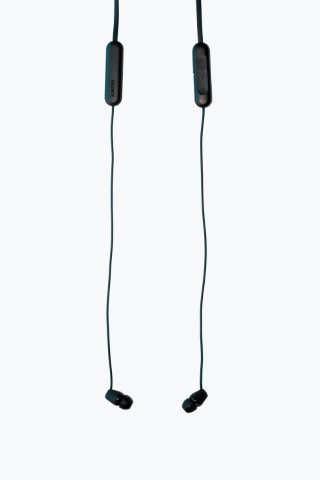Introduction to retrofit kit
A retrofit kit is a product designed to upgrade or improve an existing system or equipment. Retrofit kits are used in various contexts, including buildings, vehicles, and industrial equipment. The purpose of a retrofit kit is to enhance the performance, efficiency, or functionality of a system or piece of equipment, often by replacing or adding components or features.
Many different types of retrofit kits are available, depending on the specific needs and goals of the user. Some common examples of retrofits include energy efficiency kits, lighting kits, HVAC (heating, ventilation, and air conditioning) kits, and plumbing kits. You can use Retrofit kits to address a wide range of issues, from improving the energy efficiency of a building to upgrading the lighting system to modern standards.
Retrofit kits have numerous benefits, including cost savings, increased energy efficiency, improved performance and functionality, and environmental benefits. Retrofits can help to reduce energy consumption and greenhouse gas emissions, making them an important tool for sustainability and environmental responsibility.
In this comprehensive guide, we will explore the topic of retrofit kits in greater detail, including the various types of retrofit kits available, the benefits of using retrofit kits, how to choose the right retrofit kit, and the process of installing and maintaining retrofit kits. By the end of this guide, you will have a thorough understanding of what a retrofit kit is and how you can use it to improve the performance and efficiency of your building or system.
Types of Retrofit Kits:
Many different types of retrofit kits are available, designed to address specific needs and goals. Some common examples of retrofit kits include:
Energy efficiency retrofit kits
These kits are designed to improve the energy efficiency of a building or system by reducing energy consumption and greenhouse gas emissions. Energy efficiency retrofits can include various components, such as insulation, windows, doors, HVAC, and lighting systems.
Lighting retrofit kits
These are used to upgrade or replace outdated lighting systems with more efficient, modern alternatives. This can include LED lighting, occupancy sensors, and control systems. Lighting retrofits can significantly reduce energy consumption and cost and may also improve the overall appearance and functionality of the space.
HVAC retrofit kits
HVAC (heating, ventilation, and air conditioning) retrofit kits are used to upgrade or improve the performance of HVAC systems. This can include components such as thermostats, controls, and motors and more comprehensive upgrades such as replacing an old furnace with a newer, more efficient model. HVAC retrofits can improve energy efficiency, comfort, and indoor air quality.
Plumbing retrofit kits
Plumbing retrofit kits are used to upgrade or improve the performance of plumbing systems. This can include low-flow toilets and faucets and more comprehensive upgrades such as replacing old pipes with newer, more efficient materials. Plumbing retrofits can improve water efficiency, reduce water waste, and lower water bills.
In addition to these common types of retrofit kits, many other specialized retrofit kits are available for specific systems and equipment. For example, retrofit kits may be available for elevators, fire sprinkler systems, or industrial machinery.
When choosing a retrofit kit, it is important to carefully consider your building or system’s specific needs and goals. Different retrofit kits will be suitable for different purposes, and it is important to select a kit that is appropriate for your specific needs. It may also be helpful to consult with professionals or industry experts to ensure that you select the best retrofit kit for your project.
Benefits of Using Retrofit Kits:

Retrofit kits offer a range of benefits for building owners and operators and the environment. Some of the key benefits of using retrofit kits include the following:
Cost savings
Retrofits can help to reduce energy consumption and operating costs, which can result in significant cost savings over time. For example, upgrading an outdated lighting system with a retrofit kit may reduce energy consumption and lower electricity bills. Similarly, replacing an old furnace with a newer, more efficient model may reduce fuel consumption and lower heating bills.
Increased energy efficiency
Retrofits can help to improve the energy efficiency of a building or system, which can reduce energy consumption and greenhouse gas emissions. Energy efficiency retrofits such as insulation and energy-efficient windows can help to reduce the amount of energy needed to heat and cool a building while lighting retrofits can reduce energy consumption and improve the quality of light.
Improved performance and functionality
Retrofits can help to improve the overall performance and functionality of a building or system. For example, upgrading an HVAC system may result in improved indoor air quality, increased comfort, and better temperature control. Similarly, upgrading a plumbing system may result in improved water efficiency, reduced water waste, and better overall performance.
Environmental benefits
Retrofits can positively impact the environment by reducing energy consumption and greenhouse gas emissions. This can help to mitigate the negative impacts of climate change and contribute to a more sustainable future.
In addition to these benefits, retrofits can also help to improve the overall value and appeal of a building or property. For example, upgrading a building’s energy efficiency may make it more attractive to potential buyers or tenants and may also result in a higher resale value.
Overall, the benefits of using retrofit kits are numerous and can make a significant difference in the performance and efficiency of a building or system. By investing in retrofits, building owners and operators can save money, improve the performance of their systems, and contribute to a more sustainable future.
How to Choose the Right Retrofit Kit
When considering a retrofit project, choosing the right retrofit kit for your specific needs and goals is important. Here are some key factors to consider when selecting a retrofit kit:
- Assessing the needs of your building or system: The first step in choosing the right retrofit kit is to assess the needs of your building or system. This may involve identifying specific issues or areas for improvement and considering your overall goals for the retrofit project. For example, if you are interested in improving the energy efficiency of your building, you may want to focus on retrofit kits that address insulation, windows, or HVAC systems.
- Researching and comparing different retrofit kit options: Once you have identified your needs and goals, it is important to research and compare different options. This may involve looking at different brands and models, as well as considering factors such as cost, performance, and durability. It may also be helpful to seek recommendations or reviews from professionals or other product users.
- Consulting with professionals or industry experts: Consulting with professionals or industry experts can be a valuable resource when choosing a retrofit kit. These individuals may have firsthand experience with different retrofit kit options and can provide valuable insights and recommendations. For example, a heating and cooling specialist may recommend the best HVAC retrofit kit for your needs, or a plumbing expert may advise on the best plumbing retrofit kit for your system.
By considering these factors, you can ensure that you are selecting the best retrofit kit for your specific needs and goals. This will help to ensure that your retrofit project is successful and provides the desired benefits.
Installation of Retrofit Kits:
Proper retrofit kit installation is critical to ensure that the kit performs as intended and provides the desired benefits. Here are some key considerations for installing a retrofit kit:
- Preparation and planning: Before beginning the installation process, it is important to properly prepare and plan for the retrofit project. This may involve gathering the necessary tools and materials and obtaining any necessary permits or approvals. It is also important to carefully read and follow the instructions provided with the retrofit kit and any additional guidelines or recommendations from the manufacturer or other experts.
- Step-by-step installation process: The installation process for a retrofit kit will vary depending on the specific kit and the needs of your building or system. However, there are some general steps that you may follow for most retrofit projects:
- Disconnect and remove the old components or systems as needed
- Install any necessary supports or brackets
- Install the new retrofit components or systems
- Connect and test the new components or systems to ensure they are working properly
- Perform any necessary adjustments or fine-tuning
- Clean up and dispose of any debris or materials
- Safety considerations: When installing a retrofit kit, it is important to observe safety considerations. This may involve wearing protective equipment such as gloves, goggles, and a hard hat and following proper safety procedures. It may also be necessary to shut off power or other utilities while working on certain retrofit projects.
By following these guidelines and taking the necessary precautions, you can ensure that the installation of your retrofit kit goes smoothly and safely. Proper retrofit kit installation is essential to ensure that it performs as intended and provides the desired benefits.
Maintenance and Care of Retrofit Kits:
Once a retrofit kit has been installed, it is important to maintain and care for it to ensure optimal performance and longevity. Here are some key considerations for maintaining and caring for retrofit kits:
- Regular inspections and maintenance: Regular inspections and maintenance of retrofit kits can help to identify any issues or problems early on and prevent them from worsening. This may involve visually inspecting the retrofit components, testing their performance, and cleaning or lubricating as needed. It may also be helpful to follow any recommended maintenance schedules provided by the manufacturer or other experts.
- Troubleshooting and repairs: If issues or problems arise with a retrofit kit, it is important to address them promptly to avoid further damage or disruption. This may involve troubleshooting and identifying the root cause of the issue and then making the necessary repairs or replacements. Sometimes, it may be necessary to consult with professionals or industry experts for assistance with troubleshooting and repairs.
- Upgrading or replacing retrofit components: Over time, upgrading or replacing certain retrofit components may be necessary to maintain optimal performance and efficiency. This may involve replacing worn or damaged components or upgrading to newer, more advanced components. It is important to carefully consider the needs and goals of your building or system when deciding whether to upgrade or replace retrofit components and to consult with professionals or experts as needed.
By following these guidelines and regularly maintaining and caring for retrofit kits, you can ensure that they continue to perform at their best and provide the desired benefits. Proper maintenance and care of retrofit kits can help to extend their lifespan and maximize their value.
Conclusion: The Benefits and Importance of Retrofit Kits
In this comprehensive guide, we have explored the topic of retrofit kits in detail, including the various types available, the benefits of using retrofit kits, how to choose the right retrofit kit, and the process of installing and maintaining retrofit kits.
A retrofit kit is a product designed to upgrade or improve an existing system or piece of equipment and is used in various contexts. You can use Retrofit kits to address a wide range of issues, from improving the energy efficiency of a building to upgrading the lighting system to modern standards. Retrofit kits have numerous benefits, including cost savings, increased energy efficiency, improved performance and functionality, and environmental benefits.
When considering a retrofit project, it is important to choose the right retrofit kit for your specific needs and goals and to consult with professionals or industry experts as needed. Proper retrofit kit installation is critical and may require careful preparation and planning, following a step-by-step process, and observing safety considerations. Once you install a retrofit kit, it is important to maintain and care for it to ensure optimal performance and longevity.
Overall, retrofit kits can be a valuable tool for building owners and operators and can help to improve the performance and efficiency of a building or system. By exploring the options and benefits of retrofit kits, you can make informed decisions about how to best upgrade and improve your building or system.
Frequently Asked Questions about the retrofit kit.
A retrofit kit is a product designed to upgrade or improve an existing system or equipment. Retrofit kits are used in various contexts, including buildings, vehicles, and industrial equipment. The purpose of a retrofit kit is to enhance the performance, efficiency, or functionality of a system or piece of equipment, often by replacing or adding components or features.
Many different types of retrofit kits are available, depending on the specific needs and goals of the user. Some common examples of retrofits include energy efficiency kits, lighting kits, HVAC (heating, ventilation, and air conditioning) kits, and plumbing kits.
Retrofit kits offer a range of benefits for building owners and operators and the environment. Some key benefits of using retrofit kits include cost savings, increased energy efficiency, improved performance and functionality, and environmental benefits.
When choosing a retrofit kit, it is important to carefully consider your building or system’s specific needs and goals. Different retrofit kits will be suitable for different purposes, and it is important to select a kit that is appropriate for your specific needs. It may also be helpful to consult with professionals or industry experts to ensure that you select the best retrofit kit for your project.
To ensure optimal performance and longevity of a retrofit kit, it is important to regularly maintain and care for it. This may involve performing regular inspections and maintenance, troubleshooting and repairing any issues that arise, and upgrading or replacing retrofit components as needed. It is also important to follow any recommendations or guidelines from the manufacturer or other experts.












